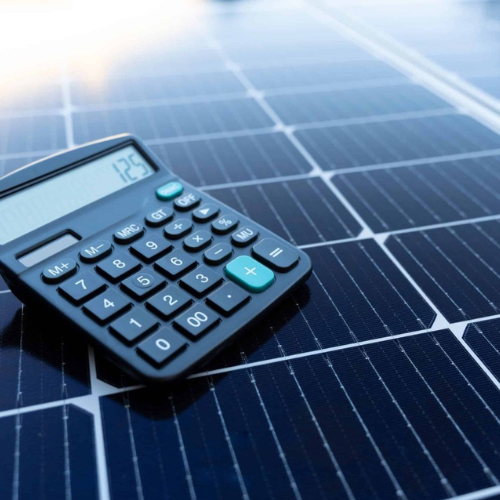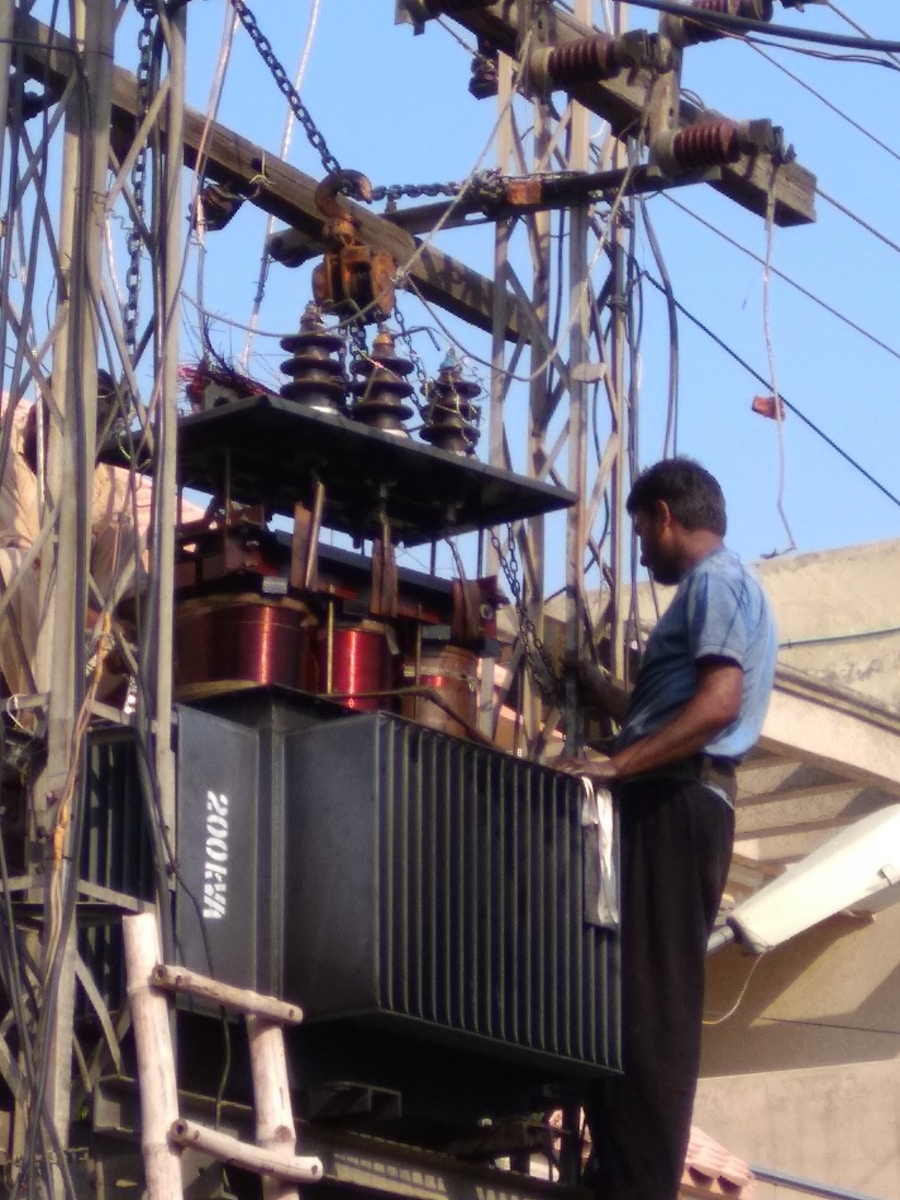Contents
Solar energy is changing the game when it comes to power, giving you a renewable energy and sustainable alternative to those traditional energy sources you’re used to.
This article dives into the basics of solar energy, breaking down how it works, the different types of various solar energy systems you can choose from, and all the amazing benefits it offers—both for the environment and your wallet.
It also tackles some common misconceptions, gives you the lowdown on solar installation and maintenance, and takes a peek into the future of solar technology advancements and solar innovations.
Explore this vital energy solution and see how it can work for you.
What is Solar Energy?
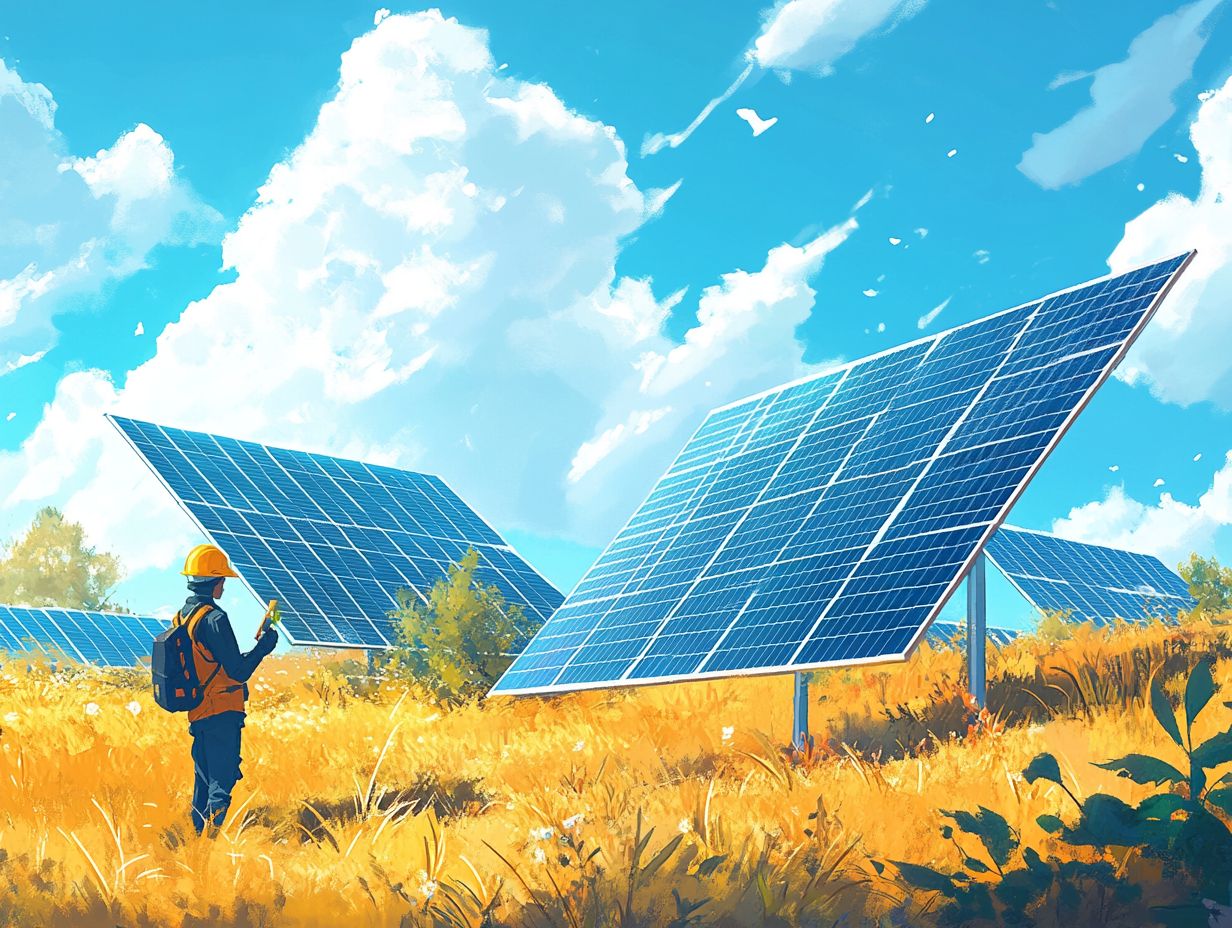
Solar energy is a fantastic renewable resource you can tap into, leveraging the capabilities of the sun’s rays to meet your energy needs in an innovative and eco-friendly way.
It’s not just sustainable; it can also help you cut down on fossil fuel reliance and play your part in combating climate change by reducing greenhouse gases and cutting your carbon footprint.
Thanks to advancements in solar technology, you can now convert sunlight into usable electricity and heat with a variety of solar energy systems.
Understanding how solar energy works.
Understanding the ins and outs of solar energy is key for anyone looking to transition to a more sustainable and energy-efficient future, which includes maximizing energy efficiency and solar performance.
Plus, solar power isn’t just good for the planet; it can also give you a sense of energy independence and some economic perks.
Definition and Explanation
Solar energy is all about using technology to turn sunlight into electricity or heat, and it mainly relies on photovoltaic systems that use solar panels made from semiconductor materials, including photovoltaic cells.
These panels do their magic by soaking up photons from sunlight, which gets those electrons in the semiconductor all fired up, creating a flow of electricity.
This process is at the heart of solar energy systems, making sure you can tap into clean, renewable energy efficiently.
The uses for this technology are pretty extensive. Whether you’re looking to set up a system at home to lower your energy bills and reduce your carbon footprint or you’re thinking about large-scale solar farms and solar power plants that can power entire communities, there’s a lot you can do.
Plus, solar energy isn’t just for electricity; it can also heat your water, power your vehicles, and even support agricultural practices. It really shows just how versatile it is and how crucial it is for building a sustainable future.
How Does Solar Energy Work?
Understanding How Does Solar Energy Work? Solar energy works by capturing sunlight through photovoltaic systems or solar thermal systems, which convert that sunlight into usable energy for all sorts of applications.
The magic happens with solar panels containing solar cells that generate electricity when they soak up sunlight.
You can use this generated solar power right away, store it in solar batteries for later, or even send it back to the grid through net metering.
This means you can enjoy some pretty sweet savings on your energy bills, enhancing your overall budget management. Whether you’re a homeowner or a business owner.
Snaith, H. J. (2013). Perovskites: The emergence of a new era for low-cost, high-efficiency solar cells. The Journal of Physical Chemistry Letters, 4(21), 3623-3630. Link
Solar Panels and the Process of Energy Conversion
Solar panels are a key player in photovoltaic systems, and they’re designed to capture sunlight and turn it into electricity through the photovoltaic effect, making solar energy generation highly efficient.
Basically, they absorb solar energy using semiconductor materials to generate a flow of electric current.
This cool process harnesses the sun’s power, transforming it into usable solar electricity that can really help cut down on your reliance on fossil fuels.
With recent advancements in solar technology, you’ll find that materials and designs have improved, allowing solar panels to capture a wider range of sunlight and boost overall energy efficiency.
Thanks to enhancements like anti-reflective coatings and the introduction of bifacial solar panels—which can soak up sunlight from both sides—these systems are now more productive than ever, incorporating solar tracking to optimize sun exposure.
So, modern photovoltaic installations not only offer greener energy solutions but also optimize performance, making them a must-have in sustainable energy strategies around the globe.
Benefits of Solar Energy
The benefits of solar energy are extensive for you, covering everything from major environmental perks to energy savings.
By using solar energy, you can significantly cut down on greenhouse gas emissions, boost your energy independence, and enjoy substantial savings on your electricity bills including solar energy for homes and additionally for solar energy for businesses.
Plus, there are numerous solar incentives, rebates, and tax credits available that can significantly reduce the cost of solar installation.
This means you can easily take advantage of renewable energy, whether you’re a homeowner or running a business.
Benefits of Solar Energy: Environmental and Financial Advantages
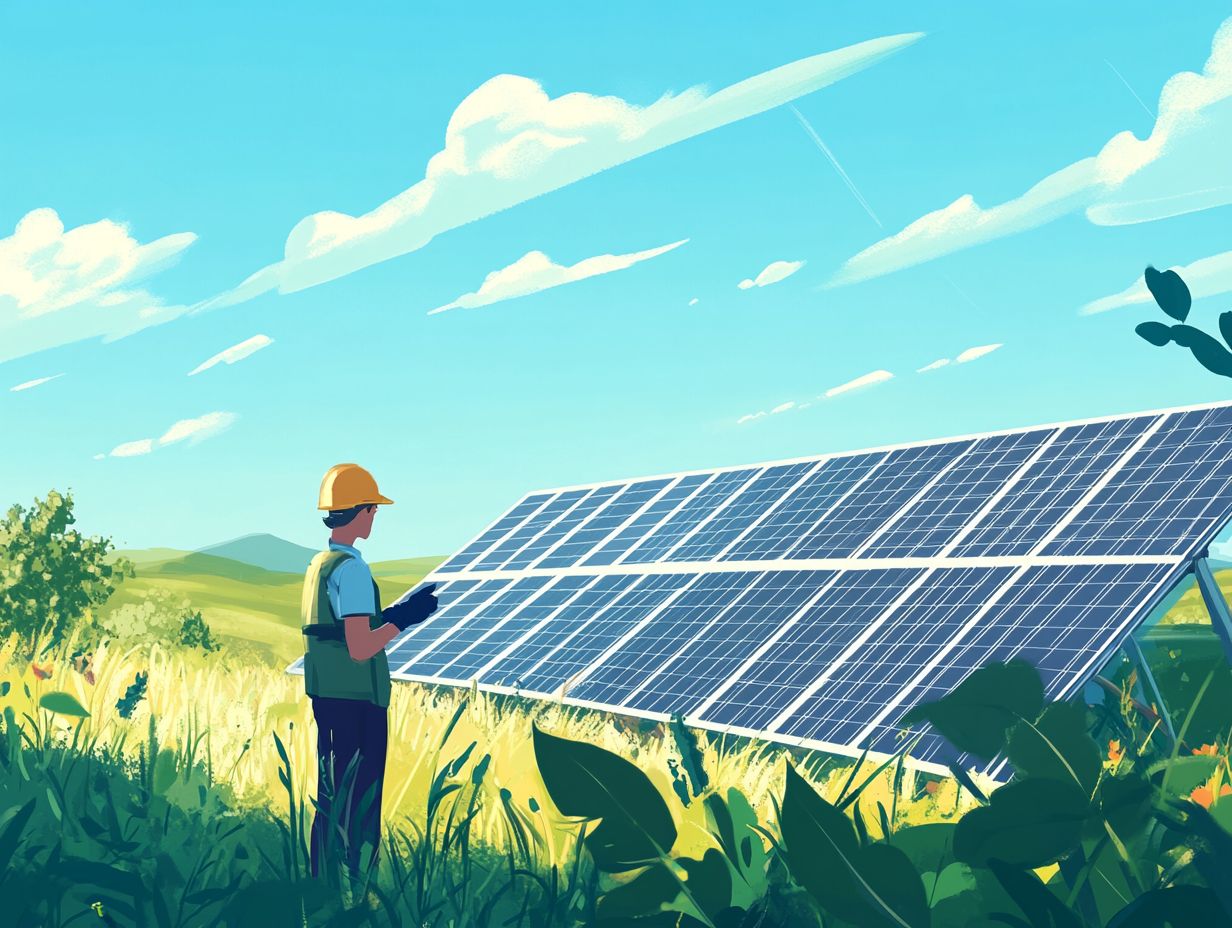
The environmental perks of solar energy are pretty impressive—you get a significant reduction in carbon emissions, which helps tackle climate change and improves air quality. On the financial side, it means long-term savings on your energy costs.
This dual benefit makes solar energy an appealing choice for environmentally conscious individuals looking to reduce their monthly utility bills while taking advantage of solar energy benefits.
By tapping into the power of the sun, you not only reduce your reliance on fossil fuels but also enjoy some favorable economics that can lead to savings over time.
These financial incentives, paired with the clear advantages of solar energy like fewer air pollutants and better grid resilience, create a win-win situation for both the planet and you as an energy user, boosting solar energy advocacy and use.
As more communities jump on the solar bandwagon, the push for cleaner energy sources just keeps gaining momentum.
Different Types of Solar Energy Systems
You’ll find a variety of solar energy systems out there today, like grid-tied systems, off-grid systems, and hybrid systems.
Each one is designed to meet different energy needs and setups, so you can choose the perfect fit for your situation.
On-Grid, Off-Grid, and Hybrid Systems
Grid-tied systems connect to the utility grid, which means you can enjoy net metering and energy exchange, making solar grid integration seamless.
On the other hand, off-grid systems go solo, usually relying on solar energy storage solutions like batteries to provide power.
This basic difference is super important when it comes to your energy independence and reliability. On-grid systems take advantage of that centralized energy supply, helping you cut down on energy costs and making maintenance a breeze, but they do rely on the grid being up and running.
In contrast, if you’re in a remote area where electricity access is shaky, off-grid systems might be your best bet.
They use solar energy storage for those crucial nighttime or cloudy day energy needs, but keep in mind they often involve higher upfront costs and careful management of your energy use.
Hybrid systems are the best of both worlds, letting you harness solar power efficiently while still having backup from the grid when you need it, enhancing energy security through solar energy storage solutions like battery storage.
This way, you can strike a balance between energy security and cost-effectiveness.
Installing Solar Panels
The installation of solar panels requires careful consideration of several important steps.
First, you’ll want to evaluate your site to see how much solar energy potential it has, considering factors such as solar resources and sun exposure.
Next, it’s time to choose the right solar energy provider that fits your needs.
Don’t forget to look into the financing options available for your solar installation—there are plenty out there that can help make it more affordable!
Factors to Consider and Steps to Take
When you’re thinking about installing solar panels, it’s important to evaluate a few key factors like the condition of your roof, how much sun your property gets, and any local solar incentives, including tax credits, that can seriously cut down on those upfront costs.
These elements are crucial for figuring out not just whether going solar is a good idea for you, but also how efficiently and how long the systems you install will last, ensuring a good return on investment from your solar project development.
You should kick things off with a thorough solar energy evaluation, which often means getting a professional to assess your current energy usage and potential savings.
Don’t forget to explore financing options—many programs out there offer loans or leases that can help lighten the financial load of installation.
And understanding solar tax credits is essential, as they can significantly offset installation costs and enhance long-term savings, making solar energy a viable option for more households like yours, facilitated by various solar financing options.
Maintaining and Repairing Solar Panels
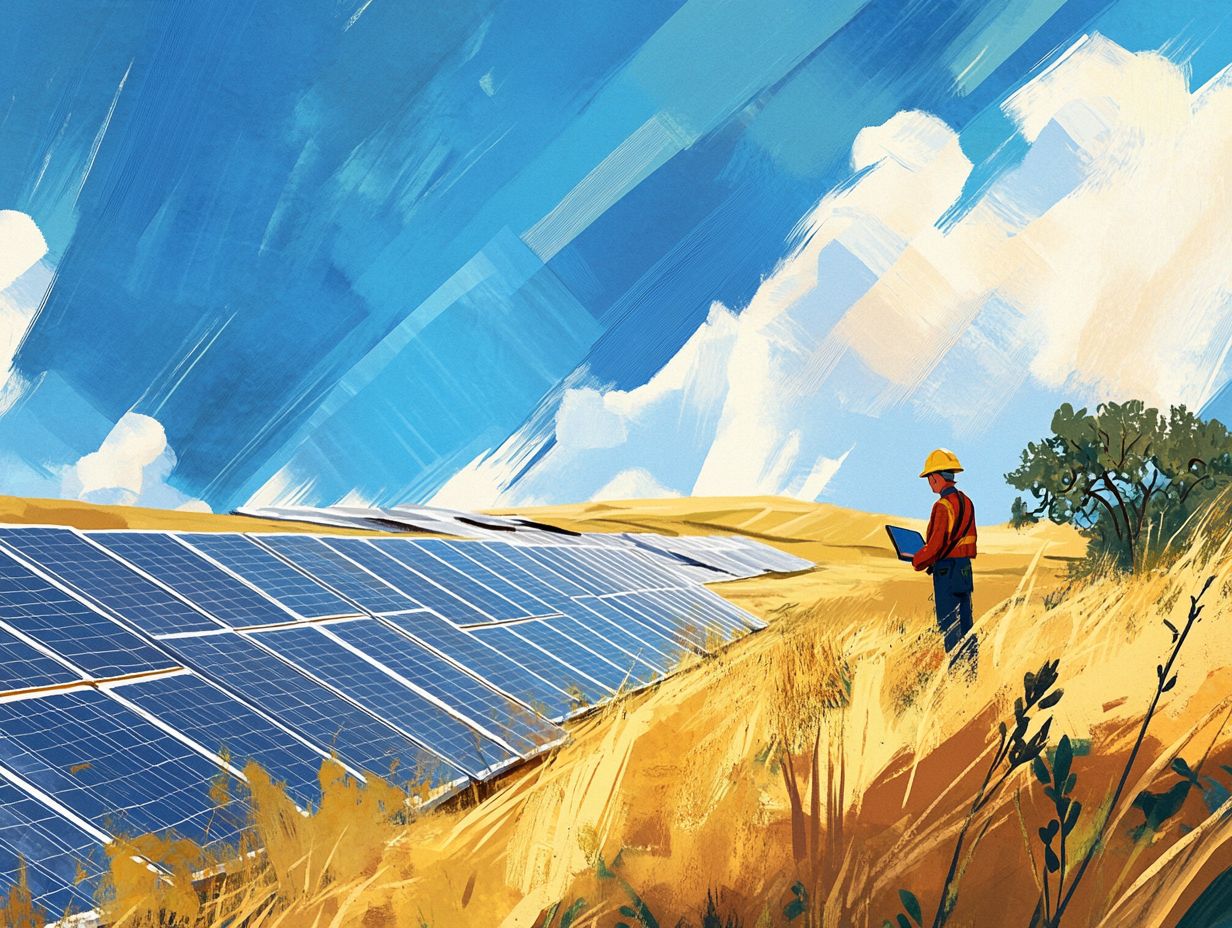
Keeping your solar panels in top shape is key to ensuring they last as long as possible and perform at their best, ensuring optimal solar performance and durability.
This means you’ll want to make it a habit to regularly clean them, inspect for any wear and tear, and troubleshoot any issues that pop up during operation.
Tips and Techniques for Longevity
To keep your solar panels working like a charm for as long as possible, regular maintenance is key. This means getting into the habit of cleaning the panels and checking the system for any signs of wear and tear, essential for solar maintenance.
By doing this, you not only boost energy efficiency but also stretch the lifespan of your solar equipment. Ideally, you should clean the panels every few months, especially after heavy rain or dust storms, to clear away any dirt and debris that might be blocking sunlight.
Make sure to stick to an inspection schedule at least twice a year. During these check-ups, look for damaged wiring, loose connections, and any signs of corrosion to ensure everything’s in tip-top shape.
These easy yet effective steps can make a big difference in how long your solar system lasts and how much energy you can harness from it, enhancing the efficiency of solar energy system installations.
Common Myths and Misconceptions About Solar Energy
You might come across a bunch of common myths and misconceptions about solar energy that could steer you off course, as solar energy myths are pervasive.
For instance, some people believe that solar is super expensive, that it doesn’t work well in cloudy weather, or that solar panels need a ton of maintenance. These ideas can definitely mislead potential users like you.
Debunking Common Misconceptions
Debunking false information about solar energy can really help clear up the confusion and encourage you to consider solar as a viable energy solution. It’s especially important to tackle those common myths about costs and efficiency.
You might feel a bit overwhelmed by the complexities surrounding solar energy, and it’s easy to see how misconceptions could lead to unnecessary hesitations.
For example, you may think the initial investment is way too high, but the truth is that costs have dropped by over 70% in the last decade, making it more accessible than ever.
Plus, the efficiency of solar panels has seen a significant boost, with some models hitting over 20% efficiency.
Real-world examples, such as residential installations in sunny areas, demonstrate the potential for substantial savings on energy bills. This really highlights how practical it is to embrace solar as a sustainable choice.
Future of Solar Energy
The future of solar energy is looking bright for you, with ongoing research and innovations focused on making solar technology even better, more efficient, and more accessible.
As the market for solar energy keeps growing, you’ll see advancements in solar systems and energy storage solutions that will be crucial for meeting energy demands in a sustainable way.
International Renewable Energy Agency (IRENA). (2021). World Energy Transitions Outlook. Link
Advancements and Potential Impact on the World
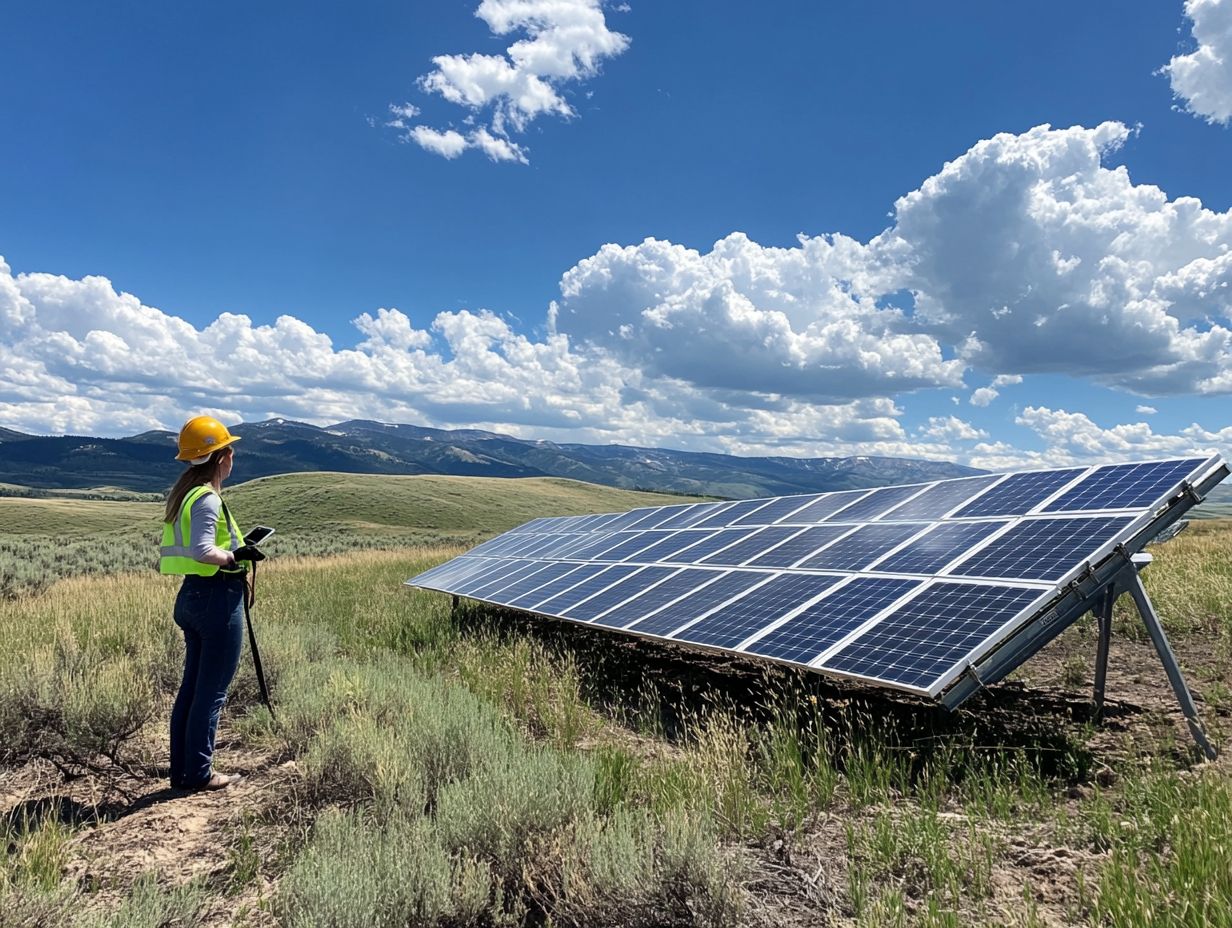
Advancements in solar energy technology are about to boost efficiency and cut costs, making clean energy more accessible for communities everywhere and helping everyone shift toward sustainable energy sources.
These innovations give local governments and organizations the chance to engage with you in meaningful ways, encouraging your participation in clean energy initiatives.
When you adopt solar solutions, you’re not just contributing to environmental sustainability; you’re also reaping the economic rewards, like lower energy bills and the creation of new jobs in the renewable energy sector.
As the demand for skilled labor in installation and maintenance increases, educational programs focusing on solar technologies can thrive, empowering you and your neighbors to join in this energy revolution.
Ultimately, these advancements foster a collaborative spirit, uniting diverse groups in a shared effort to build a greener future together.
Frequently Asked Questions
What is solar energy?
Solar energy is a renewable energy source that is generated from sunlight and can be converted into electricity or used for heating and cooling purposes.
How does solar energy work?
Solar panels, also known as photovoltaic (PV) panels, absorb sunlight and convert it into direct current (DC) electricity. This electricity is then converted into alternating current (AC) electricity using an inverter and can be used to power homes and businesses.
What are the benefits of using solar energy?
There are several benefits to using solar energy, including cost savings on electricity bills, reducing carbon emissions, and contributing to a cleaner environment. Additionally, it is also a renewable energy source, meaning it will never run out.
What is the cost of solar energy?
The cost of solar energy can vary depending on factors such as the size and efficiency of the system, location, and installation costs. However, it is generally becoming more affordable as technology advances and government incentives are offered. In fact, the cost of solar panels has dropped by about 82% since 2010.
Despite its numerous benefits, there are some potential drawbacks to using solar energy?
While there are many benefits to using solar energy, there are also some potential drawbacks. These can include the initial cost of installation, variable energy production depending on weather conditions, and the need for space for solar panels.
Can solar energy be used for heating and cooling?
Yes, solar energy can be used for heating and cooling through the use of solar thermal systems. These systems use the sun’s energy to heat water or air, which can then be used for heating purposes in homes and buildings. For example, solar water heaters can be used to provide hot water for residential use.


